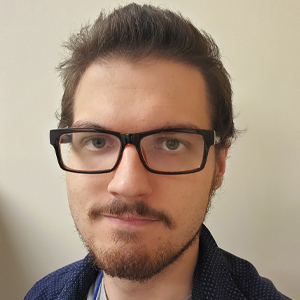AI harnesses tumor genetics to predict treatment response
In a groundbreaking study published on January 18, 2024, in Cancer Discovery, scientists at University of California San Diego School of Medicine leveraged a machine learning algorithm to tackle one of the biggest challenges facing cancer researchers: predicting when cancer will resist chemotherapy.
All cells, including cancer cells, rely on complex molecular machinery to replicate DNA as part of normal cell division. Most chemotherapies work by disrupting this DNA replication machinery in rapidly dividing tumor cells. While scientists recognize that a tumor's genetic composition heavily influences its specific drug response, the vast multitude of mutations found within tumors has made prediction of drug resistance a challenging prospect.

The new algorithm overcomes this barrier by exploring how numerous genetic mutations collectively influence a tumor's reaction to drugs that impede DNA replication. Specifically, they tested their model on cervical cancer tumors, successfully forecasting responses to cisplatin, one of the most common chemotherapy drugs. The model was able to identify tumors at most risk for treatment resistance and was also able to identify much of the underlying molecular machinery driving treatment resistance.
"Clinicians were previously aware of a few individual mutations that are associated with treatment resistance, but these isolated mutations tended to lack significant predictive value. The reason is that a much larger number of mutations can shape a tumor's treatment response than previously appreciated," Trey Ideker, PhD, professor in Department of Medicine at UC San Diego of Medicine, explained. "Artificial intelligence bridges that gap in our understanding, enabling us to analyze a complex array of thousands of mutations at once."
One of the challenges in understanding how tumors respond to drugs is the inherent complexity of DNA replication — a mechanism targeted by numerous cancer drugs.
“Hundreds of proteins work together in complex arrangements to replicate DNA," Ideker noted. "Mutations in any one part of this system can change how the entire tumor responds to chemotherapy.”
The researchers focused on the standard set of 718 genes commonly used in clinical genetic testing for cancer classification, using mutations within these genes as the initial input for their machine learning model. After training it with publicly accessible drug response data, the model pinpointed 41 molecular assemblies — groups of collaborating proteins — where genetic alterations influence drug efficacy.
“Cancer is a network-based disease driven by many interconnected components, but previous machine learning models for predicting treatment resistance don’t always reflect this,” said Ideker. "Rather than focusing on a single gene or protein, our model evaluates the broader biochemical networks vital for cancer survival."
After training their model, the researchers put it to the test in cervical cancer, in which roughly 35% of tumors persist after treatment. The model was able to accurately identify tumors that were susceptible to therapy, which were associated with improved patient outcomes. The model also effectively pinpointed tumors likely to resist treatment.
Further still, beyond forecasting treatment responses, the model helped shed light on its decision-making process by identifying the protein assemblies driving treatment resistance in cervical cancer. The researchers emphasize that this aspect of the model — the ability to interpret its reasoning — is key to the model’s success and also for building trustworthy AI systems.
"Unraveling an AI model's decision-making process is crucial, sometimes as important as the prediction itself," said Ideker. "Our model's transparency is one of its strengths, first because it builds trust in the model, and second because each of these molecular assemblies we’ve identified becomes a potential new target for chemotherapy. We’re optimistic that our model will have broad applications in not only enhancing current cancer treatment, but also in pioneering new ones."
This article was originally published on the UC San Diego website. You can read the original here.
Enjoy reading ASBMB Today?
Become a member to receive the print edition four times a year and the digital edition monthly.
Learn moreGet the latest from ASBMB Today
Enter your email address, and we’ll send you a weekly email with recent articles, interviews and more.
Latest in Science
Science highlights or most popular articles

The science of staying strong
Muscles power every movement, but they also tell the story of aging itself. Scientists are uncovering how strength fades, why some species resist it and what lifestyle and molecular clues could help preserve muscle health for life.

Bacteriophage protein could make queso fresco safer
Researchers characterized the structure and function of PlyP100, a bacteriophage protein that shows promise as a food-safe antimicrobial for preventing Listeria monocytogenes growth in fresh cheeses.

Building the blueprint to block HIV
Wesley Sundquist will present his work on the HIV capsid and revolutionary drug, Lenacapavir, at the ASBMB Annual Meeting, March 7–10, in Maryland.

Gut microbes hijack cancer pathway in high-fat diets
Researchers at the Feinstein Institutes for Medical Research found that a high-fat diet increases ammonia-producing bacteria in the gut microbiome of mice, which in turn disrupts TGF-β signaling and promotes colorectal cancer.

Mapping fentanyl’s cellular footprint
Using a new imaging method, researchers at State University of New York at Buffalo traced fentanyl’s effects inside brain immune cells, revealing how the drug alters lipid droplets, pointing to new paths for addiction diagnostics.

Designing life’s building blocks with AI
Tanja Kortemme, a professor at the University of California, San Francisco, will discuss her research using computational biology to engineer proteins at the 2026 ASBMB Annual Meeting.

